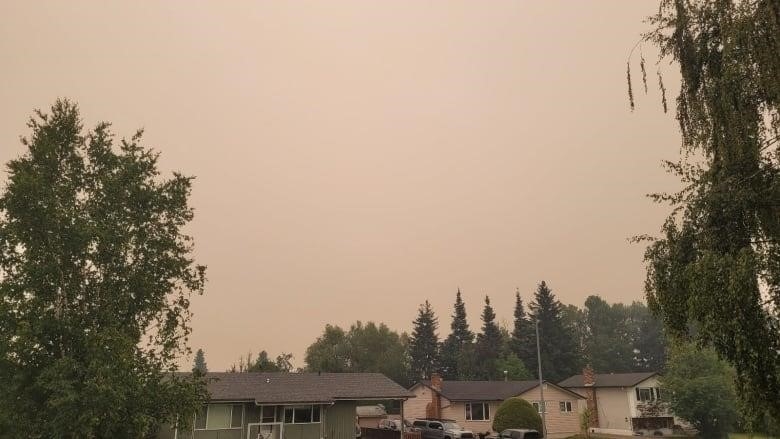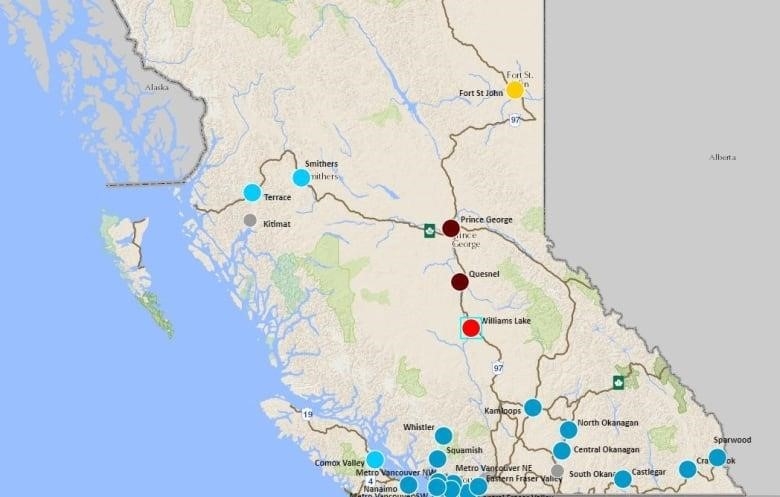
There are more than 330 fires going on in B.C., most of them in the northwest and central parts of the province
People in some parts of central and northern B.C. are being warned that the smoke from wildfires burning in the area is making the air quality very bad.
According to the most recent data released by the B.C. government on Wednesday, Prince George and Quesnel have a score of “10+” on the air quality health index (AQHI). This means that people who live there and in the surrounding areas face high health risks from air pollution.
People in those cities have seen light white ash fall from the sky and cover cars and buildings.
The B.C. Wildfire Service says that of the province’s about 330 fires, more than two-thirds are in central and northern B.C.
WATCH: People work to put out wildfires in northwest B.C.
At least 12 new evacuation orders or alerts have been sent out in British Columbia in the last day. This is because lightning storms and drought make it harder to fight the hundreds of wildfires that are burning there.
The fire just east of the Village of Burns Lake has forced more people to leave, and a number of properties outside of Houston have also been told to evacuate. The fire is not close to any large towns or cities.
The Regional District of Bulkley-Nechako has sent out 18 emergency alerts because of fires in the area, seven of which are orders to leave.
An evacuation alert means that people should get ready to leave their homes quickly or not at all. When people are told to evacuate, they should leave right away.
The Cariboo Regional District in central B.C. has also sent out several orders to evacuate. On Wednesday, a new order covered 293 land parcels around Teepee Lake.
Wednesday, the Regional District of Fraser-Fort George also told people near the Great Beaver Lake fire in Electoral Area G to leave their homes.
Fort St. John, in northeastern B.C., is the closest city to the Donnie Creek wildfire, which has already burned over 580,000 hectares of land. It has a score of “4” on the index.

The AQHI is an Online way to share health informationHealth Canada came up with it. It looks at how bad air pollution is and how it affects the general population and people who are more likely to be affected by it, like seniors, babies, and people with heart or lung problems.
The index takes into account real-time levels of fine particulate matter, ground-level ozone, and nitrogen dioxide, which are three common air pollutants in Canada.
People who are weak could be hurt by bad air quality
In its Tuesday air quality advisory, the British Columbia government said that people with pre-existing health conditions, respiratory infections, seniors, children, and women who are pregnant are more likely to be hurt by bad air quality.
The province suggests that people who are vulnerable follow these rules:
- If you are having trouble breathing, slow down or stop doing physical activities.
- Drink lots of water to keep yourself cool and hydrated.
- Always bring along any medications you might need in an emergency.
